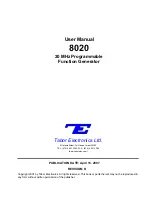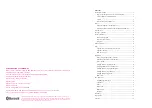
14
Paragon 4 Chuff
Control
Synopsis
The steam locomotive creates multiple chuff sounds when moving. At initial startup or
after the locomotive is stopped for over 30 seconds, a steam cock sound occurs for
several wheel rotations determined by
. The volume of the steam cock sounds is
controlled by
. After the steam cock chuff event is completed, the chuff sequence
starts. These chuffs occur four per drive wheel revolution (eight on articulated steams)
and are timed by motor revolutions using a motor sensor. The four chuffs vary,
producing a satisfactory cadence.
Locomotive Throttle Control
The chuff magnitude changes with the throttle. Increasing the throttle causes the chuff
sound to increase in magnitude determined by
. The amount of throttle change
to cause this chuff sound increase is determined by
This chuff magnitude returns back automatically over a short time period to its initial
magnitude.
Correspondingly, decreasing the throttle causes a change in chuff magnitude as well as
playing coasting rod knock chuff sound. Decreasing the throttle causes the coasting rod
knock chuff sound to play at a magnitude determined by
. This coasting rod
knock chuff sound plays for a number of drive wheel revolutions determined by
then returns to the normal chuff. The amount of throttle change to cause this coasting
rod knock chuff sound to play is determined by
allow manual control of the chuff magnitude. Pressing F5 repeatly
allows the user to simulate a heavier load by increasing the chuff magnitude. The
increased value of the chuff magnitude is represented by each press of F5 and is set by
. Pressing F6 repeatly allows the user to simulate a lighter load by decreasing the
chuff magnitude. The decreased value of the chuff magnitude is represented by each
press of F6 and is set by















































